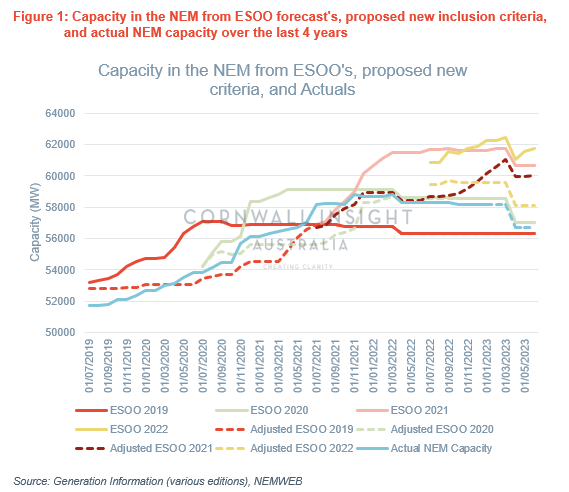The delays experienced by new connections and the exclusion of projects that are further behind in their developmental cycle have been cited as the reason for the inaccurate capacity forecasts.
As it stands, most new connections in the National Electricity Market (NEM) assume that the time taken to progress from ‘committed’ status to being fully in service would take on average a year less than the actual observed time, meaning electricity capacity in the short-term is significantly lower than currently forecast.
While on the other side, the Australian Energy Market Operator (AEMO) report, known as the Electricity Statement of Opportunities (ESOO), does not include projects further behind in the development cycle as their existing criteria classifies their connection as uncertain, however, it is rare that a project meeting this criteria does not eventually make it to market, leaving long-term capacity under-estimated.
The AEMO is currently consulting on plans to change the forecasting methodology of the ESOO report, in a bid to remove uncertainty and make sure opportunities and risks are clearly defined. It has proposed applying:
- A six-month delay to all projects that have been granted ‘committed’ status and have not met their first commissioning hold point.
- Including projects with ‘anticipated’ status, while also applying a 12-month delay to the project’s full commercial use dates supplied by the participants.
Cornwall Insight has compared the actual capacity in the NEM (including the closure of Liddell in the imminent future) with the forecast capacities from the last four major annual ESOO releases (Figure 1). The changes to ‘anticipated’ timing are not significantly relevant in this timeframe, but the delays to ‘committed’ units can be seen in the dotted lines. Each dotted line, which has been adjusted for the AEMO’s proposed methodology, is closer to the actual NEM capacity line than the original forecast.

Ben Tudman, Energy Market Specialist at Cornwall Insight said: “The proposed changes to the Electricity Statement of Opportunities report will be a step towards closer alignment between forecasts and reality. It is hoped that these actions will increase the value of the report by more accurately identifying risks and opportunities for energy storage and generation.”
“Although efforts such as the Connections Reform Initiative have been put in place to address delays in the commissioning process, there still exists uncertainty for developers seeking to connect to the NEM. It is important to recognise the importance of increasing certainty for investors, to avoid slowing down the growth of the NEM capacity. The AEMO must be committed to exploring all possible avenues to reduce this uncertainty and facilitate investments in the energy sector.”






By submitting this form you agree to pv magazine using your data for the purposes of publishing your comment.
Your personal data will only be disclosed or otherwise transmitted to third parties for the purposes of spam filtering or if this is necessary for technical maintenance of the website. Any other transfer to third parties will not take place unless this is justified on the basis of applicable data protection regulations or if pv magazine is legally obliged to do so.
You may revoke this consent at any time with effect for the future, in which case your personal data will be deleted immediately. Otherwise, your data will be deleted if pv magazine has processed your request or the purpose of data storage is fulfilled.
Further information on data privacy can be found in our Data Protection Policy.